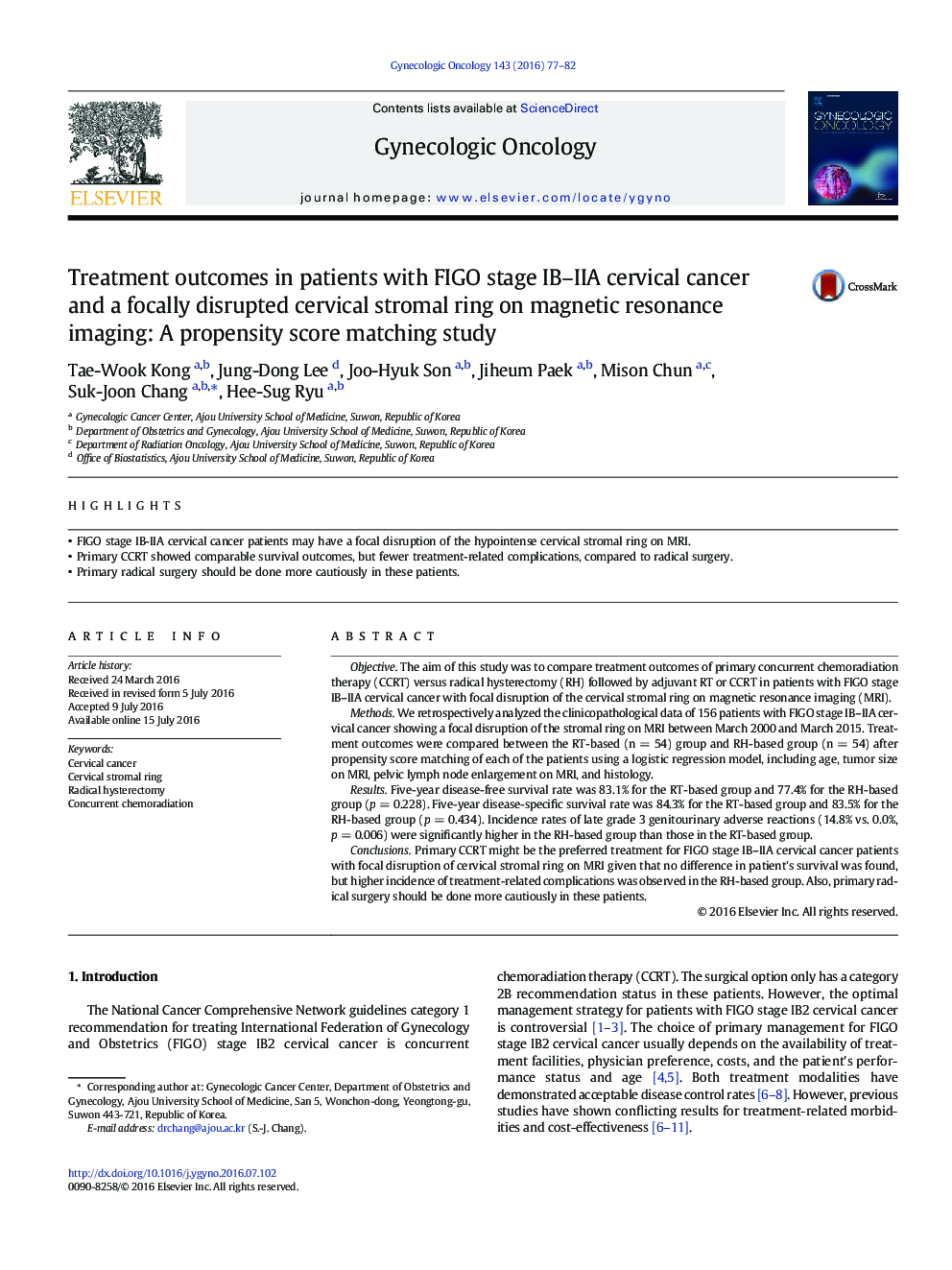| کد مقاله | کد نشریه | سال انتشار | مقاله انگلیسی | نسخه تمام متن |
|---|---|---|---|---|
| 3942411 | 1410079 | 2016 | 6 صفحه PDF | دانلود رایگان |
• FIGO stage IB-IIA cervical cancer patients may have a focal disruption of the hypointense cervical stromal ring on MRI.
• Primary CCRT showed comparable survival outcomes, but fewer treatment-related complications, compared to radical surgery.
• Primary radical surgery should be done more cautiously in these patients.
ObjectiveThe aim of this study was to compare treatment outcomes of primary concurrent chemoradiation therapy (CCRT) versus radical hysterectomy (RH) followed by adjuvant RT or CCRT in patients with FIGO stage IB–IIA cervical cancer with focal disruption of the cervical stromal ring on magnetic resonance imaging (MRI).MethodsWe retrospectively analyzed the clinicopathological data of 156 patients with FIGO stage IB–IIA cervical cancer showing a focal disruption of the stromal ring on MRI between March 2000 and March 2015. Treatment outcomes were compared between the RT-based (n = 54) group and RH-based group (n = 54) after propensity score matching of each of the patients using a logistic regression model, including age, tumor size on MRI, pelvic lymph node enlargement on MRI, and histology.ResultsFive-year disease-free survival rate was 83.1% for the RT-based group and 77.4% for the RH-based group (p = 0.228). Five-year disease-specific survival rate was 84.3% for the RT-based group and 83.5% for the RH-based group (p = 0.434). Incidence rates of late grade 3 genitourinary adverse reactions (14.8% vs. 0.0%, p = 0.006) were significantly higher in the RH-based group than those in the RT-based group.ConclusionsPrimary CCRT might be the preferred treatment for FIGO stage IB–IIA cervical cancer patients with focal disruption of cervical stromal ring on MRI given that no difference in patient's survival was found, but higher incidence of treatment-related complications was observed in the RH-based group. Also, primary radical surgery should be done more cautiously in these patients.
Journal: Gynecologic Oncology - Volume 143, Issue 1, October 2016, Pages 77–82
